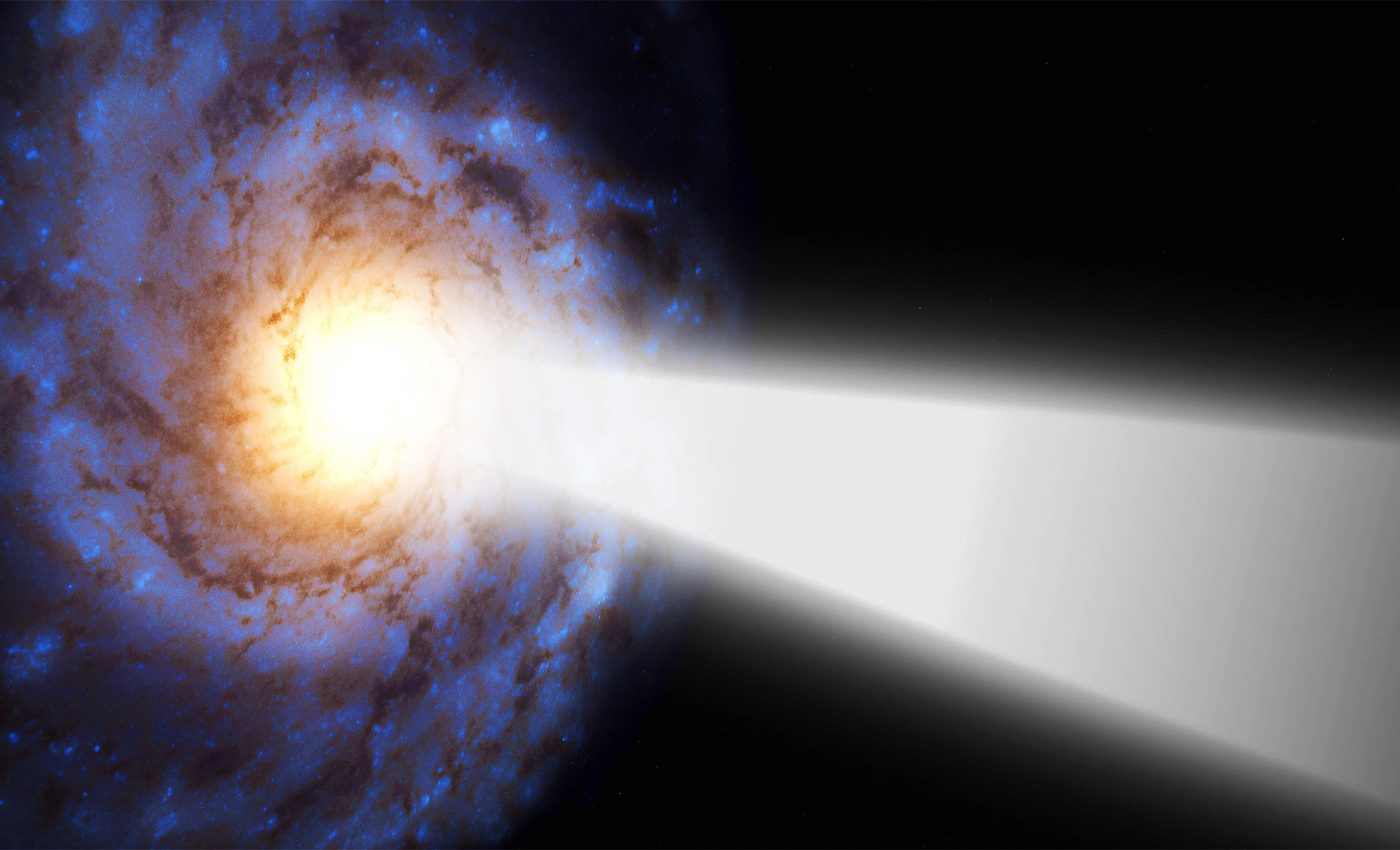
Astronomers may have discovered a cosmic event that is completely new to science
Astronomers report the longest gamma-ray burst ever recorded, confirmed in a new paper. The signal, labeled GRB 250702B, flashed for about 7 hours after NASA’s Fermi telescope first saw it on July 2, 2025.
The team argues the engine was not a normal collapsing star. They present evidence that a preexisting black hole plunged into a partner star and powered jets from deep inside.
GRB 250702B is unprecedented
In simple terms, a gamma-ray burst (GRB) is the most energetic explosion in the universe. They can briefly outshine entire galaxies and are often followed by afterglows in X-ray, optical, and radio wavelengths.
GRBs usually occur when a star collapses into a black hole, releasing a sudden blast of extremely energetic light that lasts only seconds. A rare class called ultra-long events lasts more than 1,000 seconds.
This particular gamma-ray burst, GRB 250702B, continued for 25,000 seconds, blowing away the previous record-holder – GRB 111209A, which was linked to a bright supernova.
“It basically just does not observationally look like any of the other things in that category that we’ve seen,” astrophysicist Daniel Perley of Liverpool John Moores University tells Science.
A helium merger is a compact black hole falling into a stripped star and feeding for hours.
As the black hole spirals inward, it builds an accretion disk, a hot, magnetized ring of infalling gas that can launch jets.
One likely power source is the Blandford Znajek mechanism, which taps the spin of the black hole through magnetic fields to drive those jets.
Key gamma ray burst signs
The light curve shows rapid flickers of roughly one second. That short timescale points to a compact engine, consistent with a stellar mass black hole rather than a supermassive one.
The team detected photons in the multi-MeV range from GRB 250702B, implying its jets were moving at extreme speeds. They infer a high Lorentz factor, a number that describes how close the jet speed is to light speed.
The burst’s spectrum also lacks a meaningful delay between hard and soft photons. That pattern matches many long bursts powered by narrow, ultra fast jets.
Telescopes confirm GRB 250702B
Follow up spectroscopy with the Webb Telescope measured a redshift of 1.036. The same study found no obvious supernova at the burst site about 25.5 days after the event in the source’s rest frame.
A measured redshift, a shift in spectral lines caused by cosmic expansion, lets scientists estimate distance and energy. It also anchors comparisons with earlier ultra-long bursts.
The position sits away from the host galaxy’s center, which argues against a supermassive black hole tearing apart a star.
That scenario, a tidal disruption event (TDE), a star shredded by a giant black hole, should occur at a galaxy’s core.
Known reasons for long GRBs
Typical GRBs, occur when a massive star collapses in on itself, a collapsar, becoming a black hole. The spin and structure of one star usually limit the burst to one or two minutes at most.
A merger, on the other hand, involves two compact objects – usually neutron stars or a neutron star and a black hole – spiraling together and colliding after millions or billions of years.
That collision releases an enormous burst of gamma rays, but it’s much shorter, typically lasting less than two seconds.
A long, low rate of feeding can still keep the jets on if the black hole spins fast enough. That would explain the long duration of GRB 250702B, with a power level similar to ordinary long bursts.
No bright supernova showed up in the Webb Telescope follow up study, a finding that’s compatible with weak disk winds and less radioactive nickel created in the disk.
The study’s authors suggest any explosion may have been faint, smothered by dust, or both. Either way, a dim event would fit a merger channel better than a textbook collapsar.
More study needed on GRB 250702B
If helium mergers power some ultra-long bursts, they should favor star-forming regions rich in massive binaries. They may prefer heavier and dustier galaxies than the classic long burst hosts.
Finding them is hard because they evolve slowly and often at lower peak brightness. Wider sky coverage and long, stable monitoring should help.
The Rubin Observatory will soon survey the sky rapidly and repeatedly. That cadence can catch late time signatures and help teams decide when to trigger space telescopes.
For this study, the record length of GRB 250702B does not rewrite all gamma-ray burst physics – yet. But it does sharpen the limits are for collapsars while pointing to a different pathway when those limits break.
The claim withstands tests that ruled out other engines, including a supermassive black hole at a galaxy’s center.
It also shows why crosschecking multiple instruments matters. This result rests on gamma rays, X-rays, infrared spectra, and careful timing analysis.
Only time and much more testing will tell exactly what caused GRB 250702B. Until then, it’s fun to imagine what else is happening out there in the universe that humans have not yet witnessed.
The study is published in arXiv.
—–
Like what you read? Subscribe to our newsletter for engaging articles, exclusive content, and the latest updates.
Check us out on EarthSnap, a free app brought to you by Eric Ralls and Earth.com.
—–













